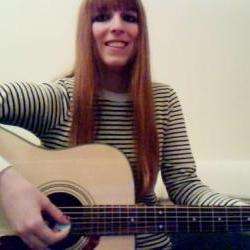“Isn’t this the sofa where your father bled to death?” the title characters asks her lover, Alwa, in the middle of Lulu, Alban Berg’s dodecaphonic opera composed 1929-1935 and premièred in 1937. Following an orchestral and film interlude, paired with projections and choreography in William Kentridge’s new production at the Met, the question splits the opera down its middle. In addition to incorporating twelve-tone rows for each character and within larger musical units like canons and chorales, the entirety of the opera itself is palindromic in structure, with performers whose characters died gruesome deaths during the first act returning as new characters in the third, and with the music of the filmic interlude reading the same backwards and forwards. In the Met’s new production, it is not Mr Kentridge’s aforementioned interjections which catalyze the performance, but rather the incredible voice and dramatic presence of Marlis Petersen as Lulu.
Ms Petersen, who has become somewhat seasoned through her numerous iterations of the role, portrayed Lulu not only as a temptress and murderess but as a wronged woman, truly “the destroyer of all because everyone destroyed her” as the poet and critic Karl Kraus put it. Her every movement was saturated not only in sensuality but in tragedy, rhythmically measured and precise yet with an air of traumatic sensation. Other performers’ graceful and adaptable vitality shown through their multiple roles – particularly mezzo Elizabeth DeShong. Daniel Brenna’s Alwa was sung with great attention and vivacity; Susan Graham’s Countess Geschwitz shimmered with a lovely vigor; yet Ms Petersen stole the show with her vibrant presence. I only wish this presence hadn’t been at times overshadowed by Mr Kentridge’s production.
Not that there was anything wrong with his or Luc De Wit’s co-direction, which was ultimately tense and effective. Equally effective were Greta Goiris’ colorful, inventive costumes (including lime green suits and a wispy white dress for Lulu) and Urs Schönebaum’s lighting design. Sabine Theunissen’s sets, in particular, were as wondrous in all their rotating, towering glory as they were suitable for the story, which circulates through both grandeur and squalor as Lulu’s story modulates through its deceptive cadences of rise and descent, marriage and murder, passion and terror. These moving sets, which somehow made the Met stage seem ever more enormous than usual, were bare enough to allow for the one’s imagination to fill in the gaps left by the vagueness of the story's substitutions and repetitions, even though they were frequently splashed with Catherine Meyburgh’s projection design.
These video projections, in the vein of much of Mr Kentridge’s earlier work, were at times on point and at others completely distracting and irrelevant. The animated shadows, doodled scraps of newspaper, and ticking clock motifs took me back to The Nose and Refuse the Hour (respectively), and I couldn’t help but observe that some of Mr Kentridge’s imagery is starting to feel recycled and worn. (It didn’t help that the audience snickered every time the recurring image of a doodled naked woman appeared through the projections.) The “acrobat” character, silently twisting and gyrating on the piano and piano bench through the prologue and all three acts, felt particularly gratuitous, distracting from the singing figures with her unnecessary contortions. The amalgamation of visual elements, though intricate and eye-catching, at times obscured the rich sonic world projecting upwards from the pit.
Indeed, the true surprise of the evening came from conductor Lothar Koenigs, filling in for James Levine, who withdrew from the productions several weeks ago in anticipation of his run conducting Tannhäuser. Mr Koenigs led the Met Orchestra musicians in the most engaging performance I’ve heard at the Met since Yannick Nézet-Séguin’s Rusalka. In addition to Lulu possessing the most interesting music we will likely hear all season from this orchestra, Mr Koenigs’ fierce composure and immaculate sense of articulation and pacing allowed us to hear how truly impressive this intimidating score is. From the fullness of the clanging piano to the plunking vibraphone, to the brass punching out clear, brisk notes in an astonishingly crisp rendition, the repetitions and palindromes came together to coalesce into a coherent, cohesive unit, dispelling any lingering notion that twelve-tone music is by nature dissonant or difficult. Ms Petersen and Mr Koenigs were instruments not only in Mr Kentridge’s whimsical production but in Berg’s extraordinary composition.




